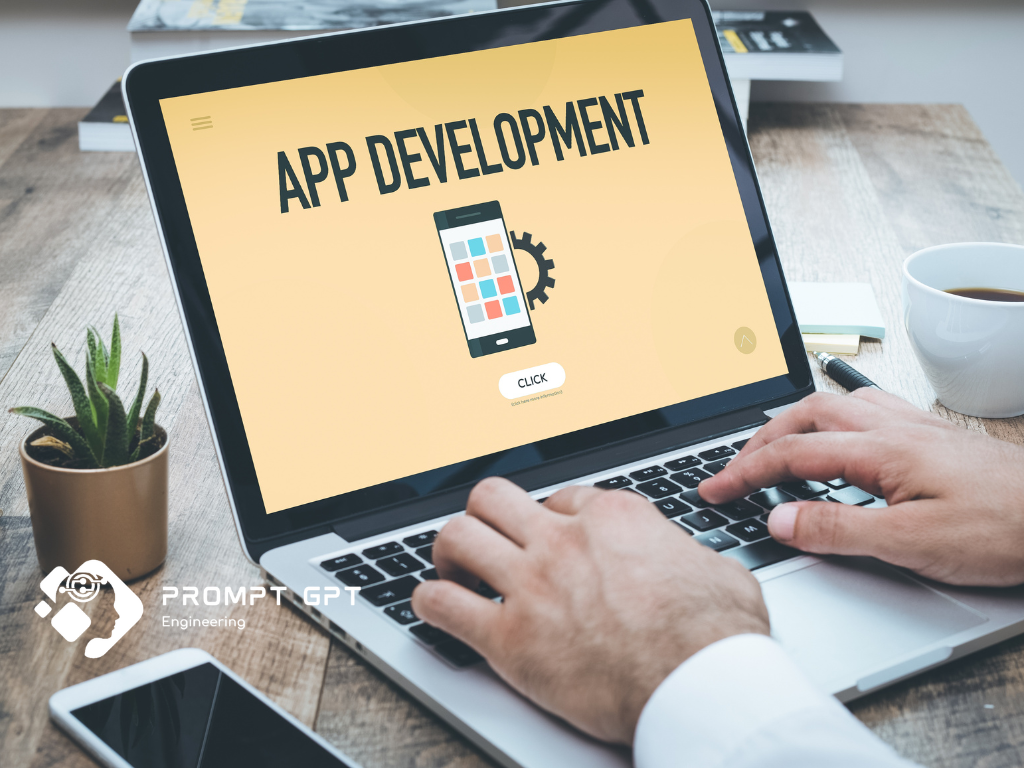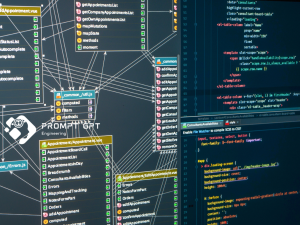As artificial intelligence (AI) continues to evolve, LangChain development is playing an increasingly important role in shaping modern AI applications. LangChain is a framework designed to build language-based models, allowing developers to create complex AI systems that can understand and generate human-like text. Whether it’s building chatbots, virtual assistants, or automated workflows, LangChain has become a go-to tool for ai developers working on advanced language models.
By providing a structured approach to chaining different AI models and components together, LangChain allows artificial intelligence developers to create more dynamic and flexible AI solutions. This development has made it easier to manage and scale AI models, improving the way AI interacts with real-world data and making it more effective in solving complex problems.
The Growing Role of AI Developers in LangChain’s Evolution
The rise of LangChain development has also expanded the responsibilities of ai developers. Now, developers are not just focused on building AI models but also on how these models can be combined into powerful systems that communicate and work together. Artificial intelligence developers are increasingly adopting LangChain to design language models that can handle multiple tasks, such as answering questions, generating content, or automating decision-making processes.
Upcoming Features and Updates in LangChain Development

What’s Next for LangChain?
As the field of LangChain development continues to grow, there are several exciting updates and features on the horizon. These advancements aim to make LangChain even more powerful and user-friendly for ai developers. One of the most anticipated updates includes improved integration with external data sources, allowing artificial intelligence developers to seamlessly connect their language models with real-time data from APIs, databases, and other sources.
Additionally, new tools for managing memory within LangChain are expected to make it easier to develop long-running applications that can retain context over extended interactions. This will open up possibilities for creating more sophisticated AI systems that can remember past interactions and make decisions based on historical data.
How These New Features Benefit AI Developers
For ai developers, these upcoming features will greatly streamline their workflows. By offering better integration with external data sources, LangChain development will enable developers to build more dynamic applications without needing to manually handle data connections. This reduces development time and ensures that language models remain up to date with real-world information.
Moreover, enhanced memory management will allow artificial intelligence developers to create AI systems that deliver more accurate and context-aware responses. This is particularly useful for applications like customer service chatbots or personal assistants, where remembering user preferences or past interactions can improve the user experience. As these new features roll out, ai developers will find it easier to build complex, reliable AI solutions that meet the growing demands of the industry.
How Prompt Engineering is Enhancing LangChain Development
The Role of Prompt Engineering in AI Development
Prompt Engineering is becoming an essential tool for artificial intelligence developers working with LangChain development. Essentially, it involves crafting specific instructions or “prompts” that guide the AI model to generate the desired output. By fine-tuning these prompts, ai developers can control how the language model responds to different inputs, ensuring that the AI behaves in a predictable and useful manner.
Developers use prompts to link various models together, creating a seamless flow of data and responses. For example, a developer might create a chain where the AI first analyzes a piece of text and then generates a summary, all guided by carefully designed prompts. This level of control allows artificial intelligence developers to build more precise and efficient AI systems.
Optimising Prompt Engineering for Future LangChain Applications
As Prompt Engineering continues to evolve, its role in LangChain development will become even more significant. AI developers can leverage prompt optimization to create AI models that are not only efficient but also intuitive to use. By refining how prompts are structured, developers can make sure that their AI systems handle a wider range of tasks with greater accuracy.
For the future, Prompt Engineering will likely become even more critical in creating AI models that can handle complex, multi-step processes. Artificial intelligence developers who master Prompt Engineering will be able to design models that are both flexible and capable of solving intricate problems. This makes it a key skill for anyone looking to build cutting-edge AI applications using LangChain.
LangChain’s Integration with Emerging AI Technologies

AI and Beyond: LangChain’s Role in Future Technologies
As LangChain development continues to evolve, its integration with other cutting-edge AI technologies, such as machine learning and deep learning, will become increasingly important. LangChain is uniquely positioned to serve as a bridge between different AI systems, allowing ai developers to build models that combine the strengths of various technologies. For example, LangChain development could enable the seamless integration of natural language processing (NLP) models with machine learning algorithms, resulting in AI systems that can not only understand language but also make predictions and learn from data in real-time.
LangChain development may also integrate with advanced AI technologies like reinforcement learning, making it possible for AI systems to adapt and improve their performance through trial and error. This will open up new possibilities for artificial intelligence developers, allowing them to create smarter and more autonomous AI applications that can interact with users in a more intuitive and natural way.
How AI Developers Can Stay Ahead of Emerging Trends
As LangChain development integrates with other AI technologies, ai developers need to stay ahead of emerging trends to remain competitive. One of the key ways to do this is by continuously learning and expanding their skill sets. For example, artificial intelligence developers who are familiar with both LangChain and machine learning techniques will be better positioned to take advantage of new opportunities.
Another tip for staying competitive is to collaborate with other ai developers and contribute to the broader AI community. By engaging with open-source projects, attending AI conferences, and staying up-to-date on the latest research, developers can ensure that they are always aware of new tools and techniques that can improve their work with LangChain development.
The Future Role of AI Developers in LangChain Development
Evolving Skills for AI Developers
As LangChain development progresses, the role of ai developers will continue to expand. To keep up with these changes, developers will need to master a range of new skills and tools. For instance, understanding Prompt Engineering will become even more crucial as developers refine how they interact with language models to produce more accurate and efficient results. Additionally, artificial intelligence developers will need to develop expertise in areas like data integration, as future LangChain applications are likely to involve pulling data from multiple external sources in real time.
Moreover, as AI systems become more autonomous and capable of handling complex tasks, ai developers will need to focus on ensuring that these systems are safe, ethical, and transparent. This will require knowledge of AI governance and ethical frameworks, which are becoming increasingly important as AI technology grows more powerful.
How Artificial Intelligence Developers Will Drive Innovation
Artificial intelligence developers will play a key role in expanding the capabilities of LangChain development in the years to come. By pushing the boundaries of what LangChain can do, developers will be able to create AI systems that are more intelligent, versatile, and adaptable than ever before. For example, developers may use LangChain to create AI systems that can not only process language but also engage in complex problem-solving, decision-making, and real-time collaboration with humans.
Ai developers will drive innovation by finding new and creative ways to apply LangChain to industries like healthcare, finance, and education. As LangChain continues to integrate with other AI technologies, the possibilities for innovation will only grow, making it an exciting time for developers who are willing to explore new frontiers in AI.
The Long-Term Impact of LangChain on AI

LangChain’s Lasting Influence on AI and Prompt Engineering
The impact of LangChain development on the broader field of AI is expected to be profound and long-lasting. By providing a flexible and scalable framework for developing language-based AI systems, LangChain is already reshaping how ai developers build applications. The integration of Prompt Engineering into LangChain workflows has enabled developers to guide language models with greater precision, making AI systems more efficient and responsive.
In the long term, LangChain development will likely continue to influence the direction of AI research and development, particularly in areas related to natural language processing and machine learning. As artificial intelligence developers refine their use of LangChain and explore its potential, the framework is poised to become a foundational tool for building next-generation AI systems.
Why AI Developers Should Stay Invested in LangChain
For ai developers, staying invested in LangChain development is essential for remaining competitive in the rapidly evolving AI landscape. As the demand for intelligent, language-based AI solutions grows, developers who have expertise in LangChain and Prompt Engineering will be well-positioned to take advantage of new opportunities. Additionally, by continuing to engage with the LangChain developmment community and staying up-to-date on the latest updates and features, developers can ensure that they remain at the forefront of AI innovation.


